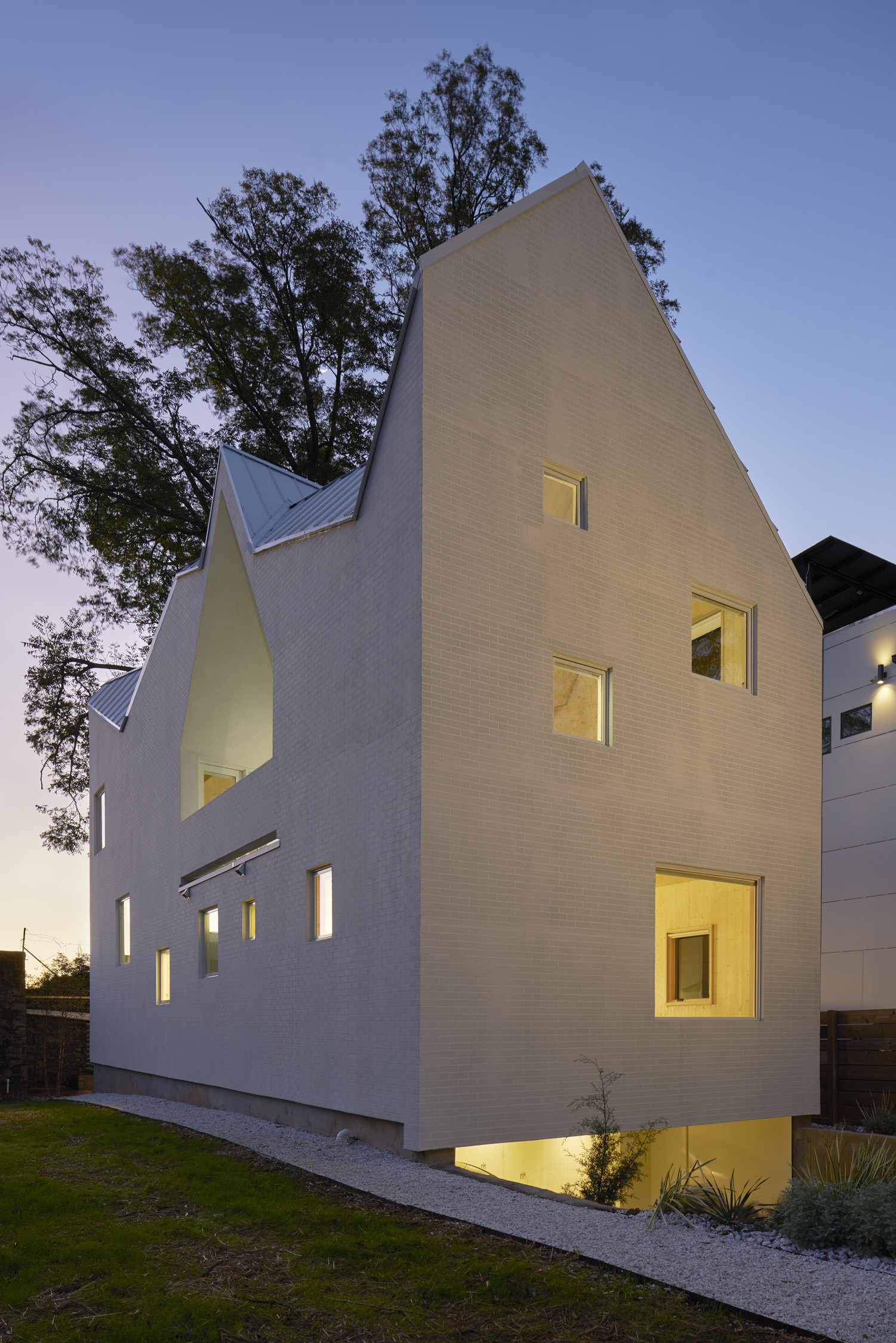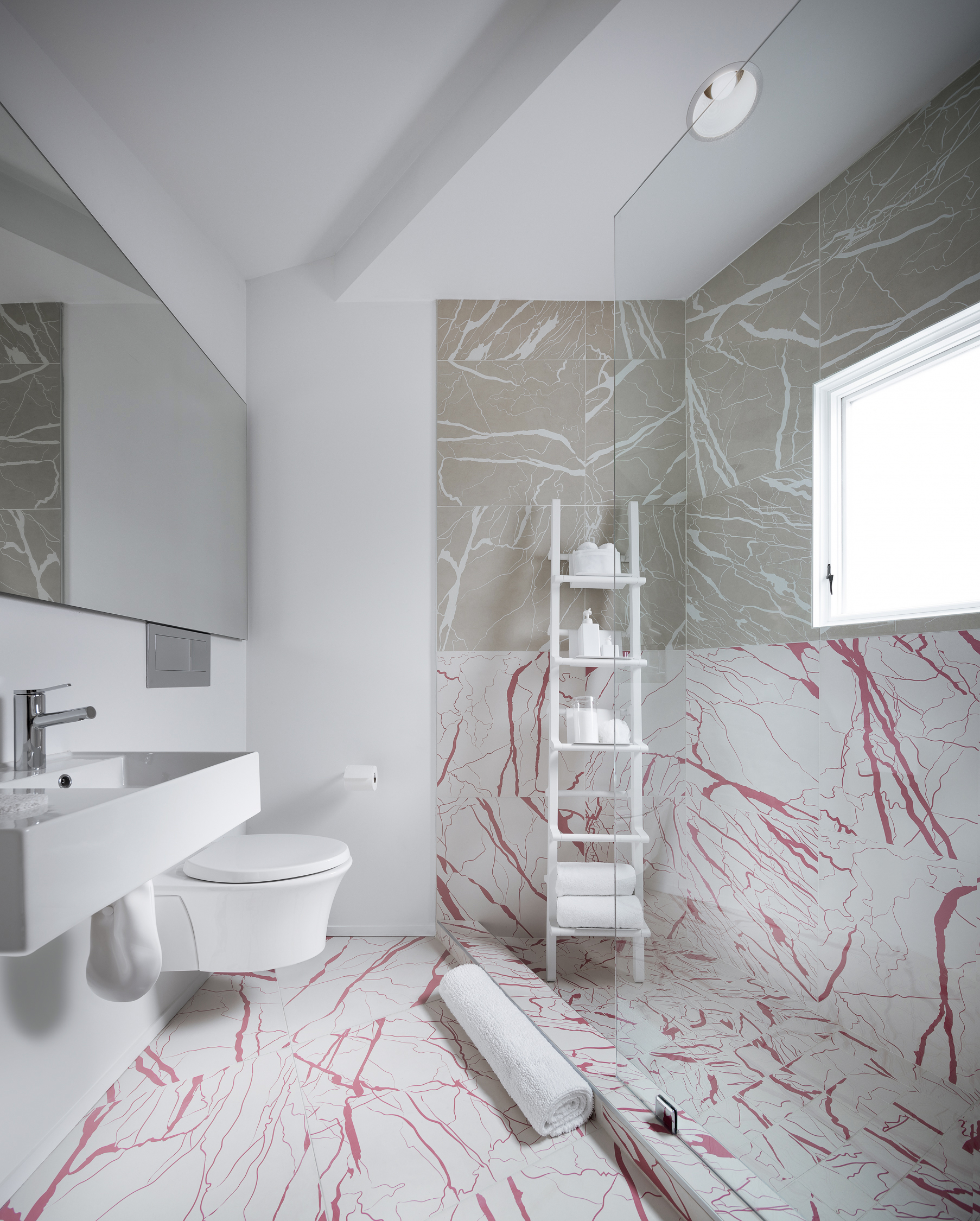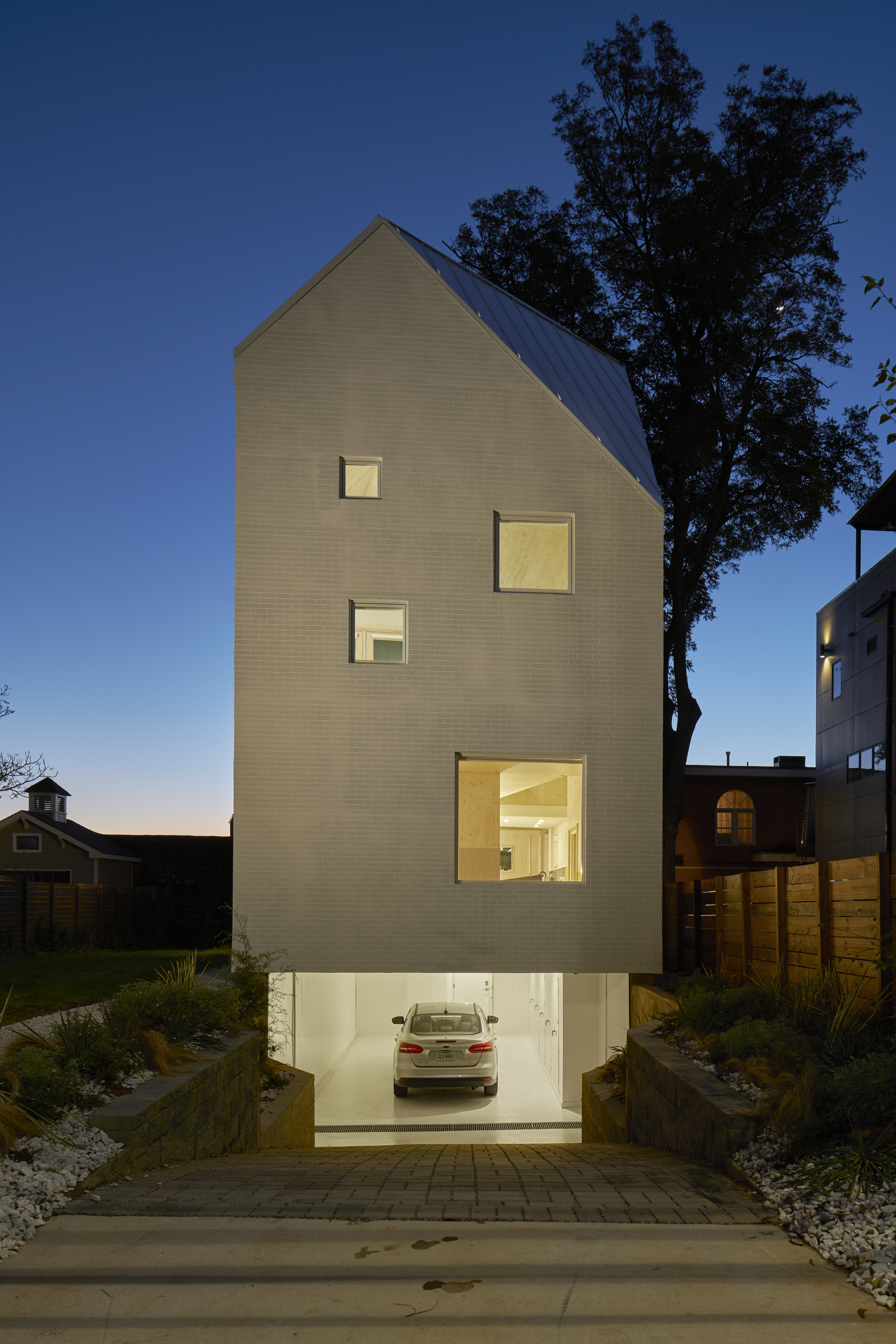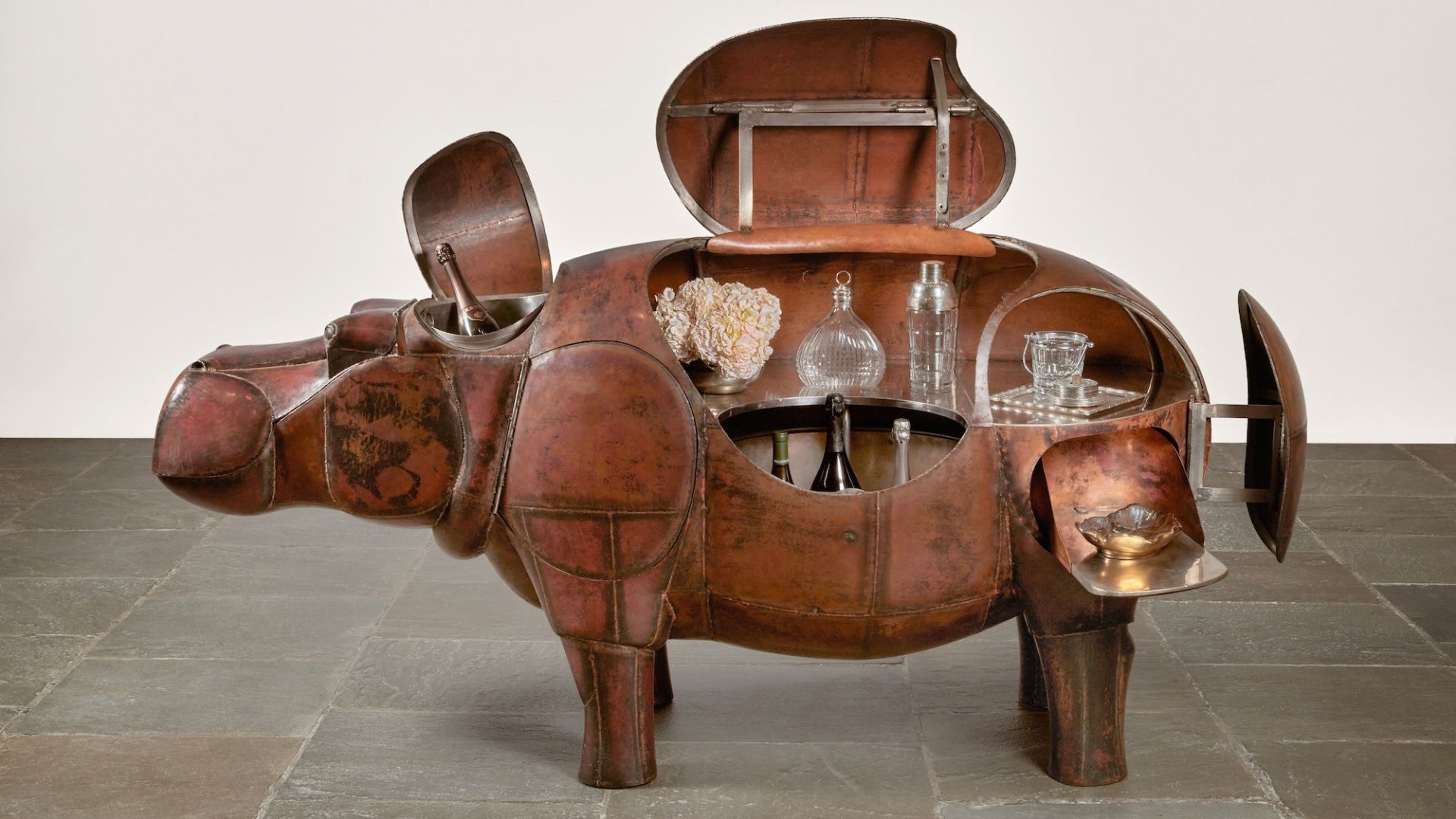MALL
WALLPAPER* ARCHITECTS’ DIRECTORY 2019: Jennifer Bonner founded MALL in Boston in 2009. The acronym stands for ‘Mass Architectural Loopty Loops’, or ‘Miniature Angles & Little Lines’, or even ‘Maximum Arches with Limited Liability’, expressing Bonner’s playful reimagining of ordinary architectural functions, as shown by Haus Gables, her twist on a traditional gable-roof house in Atlanta, Georgia.

Haus Gables, Atlanta, Georgia, US, designed by MALL, selected for the Wallpaper* Architects’ Drectory 2019.
Born in Alabama, Jennifer Bonner is assistant professor of architecture at Harvard University Graduate School of Design. She’s also the director of what she describes as a creative practice for art and architecture called MALL, which she set up in 2009 and whose name stands for, ahem, Mass Architectural Loopty Loops.
An alumnus of Foster + Partners and David Chipperfield Architects, Bonner evidently doesn’t take herself too seriously, but her work – while it has a playful side – has academic depth. Designed and developed by Bonner, Haus Gables in Atlanta is MALL’s first completed residence.

‘Without a traditional client or family member to commission a project, my husband and I took out a construction loan to build the house in Old Fourth Ward, a neighbourhood that we really love.’ Haus Gables takes a novel approach, being designed from top down rather than bottom up. Where most houses take their roof shape from their ground plan, here it’s the other way round.
As Bonner explains, ‘The roof plan establishes rooms, catwalks, and double-height spaces in the interior by aligning these spaces to ridges and valleys in the roof above. In this case, the floor plan is a result of the roof.’ The house uses novel materials as well: the prefabricated main structure, erected in just 14 days, is made from cross-laminated timber, and the interiors are decorated with faux materials such as vinyl ‘marble’ and tiled ‘terrazzo’, while two of the outside walls are covered in stucco ‘bricks’ impregnated with glass beads.
‘Continue to build, as quick as possible, but without losing quality’
MALL
According to Bonner, this follows ‘an old tradition of fauxfinishing in the American South, historically stemming from an inability to afford precious materials, and the subsequent desire to “fake it”.
‘Haus Gables is both an experiment (an architect’s first building) and a proof-of-concept related to my past research of American roof typologies,’ Bonner says. ‘The project is trying to be daring by pushing form, construction systems, structure, and materiality.’
Bonner’s first house project was certainly ambitious, and it shows. Bonner describes the experience as ‘liberating and addictive’. Setting up her practice just after the Great Recession of 2008 had meant that the majority of MALL’s early work was inside the gallery. ‘I would say my biggest lesson is to continue to build, as quick as possible, but without losing quality.’




INFORMATION
WALLPAPER* ARCHITECTS’ DIRECTORY 2019
Receive our daily digest of inspiration, escapism and design stories from around the world direct to your inbox.
-
 Alexander Wessely turns the Nobel Prize ceremony into a live artwork
Alexander Wessely turns the Nobel Prize ceremony into a live artworkFor the first time, the Nobel Prize banquet has been reimagined as a live artwork. Swedish-Greek artist and scenographer Alexander Wessely speaks to Wallpaper* about creating a three-act meditation on light inside Stockholm City Hall
-
 At $31.4 million, this Lalanne hippo just smashed another world auction record at Sotheby’s
At $31.4 million, this Lalanne hippo just smashed another world auction record at Sotheby’sThe jaw-dropping price marked the highest-ever for a work by François-Xavier Lalanne – and for a work of design generally
-
 NYC’s first alcohol-free members’ club is full of spirit
NYC’s first alcohol-free members’ club is full of spiritThe Maze NYC is a design-led social hub in Flatiron, redefining how the city gathers with an alcohol-free, community-driven ethos
-
 Step inside this resilient, river-facing cabin for a life with ‘less stuff’
Step inside this resilient, river-facing cabin for a life with ‘less stuff’A tough little cabin designed by architects Wittman Estes, with a big view of the Pacific Northwest's Wenatchee River, is the perfect cosy retreat
-
 Remembering Robert A.M. Stern, an architect who discovered possibility in the past
Remembering Robert A.M. Stern, an architect who discovered possibility in the pastIt's easy to dismiss the late architect as a traditionalist. But Stern was, in fact, a design rebel whose buildings were as distinctly grand and buttoned-up as his chalk-striped suits
-
 Own an early John Lautner, perched in LA’s Echo Park hills
Own an early John Lautner, perched in LA’s Echo Park hillsThe restored and updated Jules Salkin Residence by John Lautner is a unique piece of Californian design heritage, an early private house by the Frank Lloyd Wright acolyte that points to his future iconic status
-
 The Stahl House – an icon of mid-century modernism – is for sale in Los Angeles
The Stahl House – an icon of mid-century modernism – is for sale in Los AngelesAfter 65 years in the hands of the same family, the home, also known as Case Study House #22, has been listed for $25 million
-
 Houston's Ismaili Centre is the most dazzling new building in America. Here's a look inside
Houston's Ismaili Centre is the most dazzling new building in America. Here's a look insideLondon-based architect Farshid Moussavi designed a new building open to all – and in the process, has created a gleaming new monument
-
 Frank Lloyd Wright’s Fountainhead will be opened to the public for the first time
Frank Lloyd Wright’s Fountainhead will be opened to the public for the first timeThe home, a defining example of the architect’s vision for American design, has been acquired by the Mississippi Museum of Art, which will open it to the public, giving visitors the chance to experience Frank Lloyd Wright’s genius firsthand
-
 Clad in terracotta, these new Williamsburg homes blend loft living and an organic feel
Clad in terracotta, these new Williamsburg homes blend loft living and an organic feelThe Williamsburg homes inside 103 Grand Street, designed by Brooklyn-based architects Of Possible, bring together elegant interiors and dramatic outdoor space in a slick, stacked volume
-
 This ethereal Miami residence sprouted out of a wild, jungle-like garden
This ethereal Miami residence sprouted out of a wild, jungle-like gardenA Miami couple tapped local firm Brillhart Architecture to design them a house that merged Florida vernacular, Paul Rudolph and 'too many plants to count’